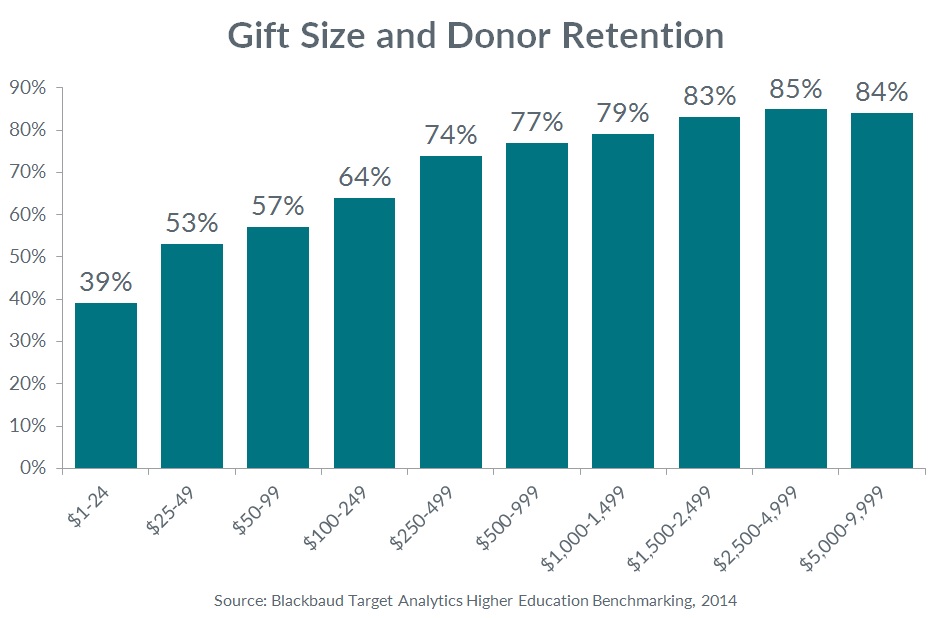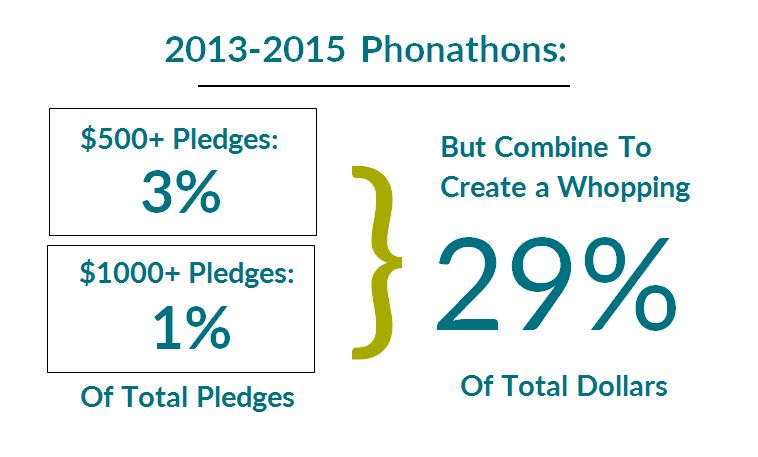fundraising
Take Control of Your Annual Fund
 Are you calling rated prospects through phonathon? What about donors of $1,000 or more? Does the annual giving team solicit donors of $2,500, or do you rely on a major gift officer to close those gifts? These questions about high end donors often elicit sighs from directors of annual giving. “We’d love to, but … ”
Are you calling rated prospects through phonathon? What about donors of $1,000 or more? Does the annual giving team solicit donors of $2,500, or do you rely on a major gift officer to close those gifts? These questions about high end donors often elicit sighs from directors of annual giving. “We’d love to, but … ”
No more sighing. It’s time to take control!
Blackbaud’s Target Analytics Higher Education Benchmarking data shows the importance of focusing on these prospects. Their research over a broad range of higher education institutions tells us that donor retention rates increase with the size of the gift. On average, institutions retain 53% of donors giving $25-$49, but that number shoots up to 83% for donors giving $1,500-$2,499. And that’s where it gets interesting. For many colleges and universities, retention rates flatten out or decline after that.
Why? The decline often occurs at the point where prospects are “handed off” to major gifts.
Head to Blackbaud for more information on participating in Target Analytics benchmarking.
Leadership prospects are incredibly important to your annual giving program. Consider the impact on phonathon: From 2013 to 2015, $500+ pledges represented just 3% of the total donors in phonathons in our database, and $1,000+ only 1%. But these pledges made up a whopping 29% of the total dollars pledged. This the Pareto principle in practice once again. We’ve mentioned before that robust programs spend a lot of time on donor acquisition (which tends to result in lower level gifts) but they take their programs to the bank with leadership prospects.
Clearly, it is important for annual giving to retain some ownership of leadership prospects. Here’s how to do it.
Get leadership on board
And be persistent! Maybe your Vice President/Director of Development/Director of Major Gifts has said no in the past, but times change and staff turns over. Be prepared to present a clear plan for how these prospects will be handled in the annual giving program. This might mean that donors meeting certain criteria will be solicited by key volunteers, while the next tier of donors will go to top phonathon callers.
Make it a win for Gift Officers, too
Gift officers want to make sure that their prospects are handled with care, and it’s your job to show them that you share that goal. Being transparent about your criteria and strategies will help to get gift officers on board.
We also need to make it okay for gift officers to let go. Many institutions will ask gift officers to review their prospect list at the beginning of the fiscal year to determine who they’ll “keep” and who will go to annual giving. At my last institution, we started putting recommendations on that list. Once gift officers could see clearly that John would be in phonathon, Mary would get direct mail, and Bill would be solicited by a leadership volunteer, we found that they made very few changes to the list.
Remember that gift officers have goals to meet, just like the annual giving team. So make this a win-win, and share credit for annual gifts secured from their prospects. Allow gift officers to count any annual gift from their prospect towards their goal, regardless of the source. It can transform a struggle into a team effort.
Make it easy on everyone
By completing this evaluation once at the beginning of the fiscal year, the logistics of managing major gift prospects in the annual fund become much simpler. It’s no longer necessary to wait for approval before every round of calling or major mailing, which makes it easier to keep the annual giving plan on track.
It’s helpful to create clear reports that are distributed to gift officers on a regular basis, showing the status of each prospect (gift received, pledge made, solicitation pending or in progress). This keeps gift officers in the loop and allows them to follow up with a personal thank you to prospects as they give.
Don’t let another fiscal year slip by without revisiting your policy on major gift prospects in the annual fund.
This could be the single largest area of growth potential in your annual giving program.

